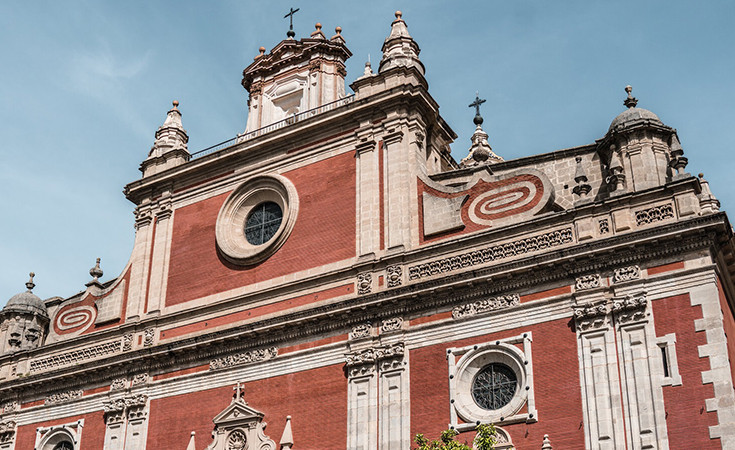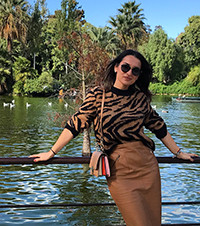
The Church of a Divine Savior is, after the grandiose Cathedral of Seville, the largest holy temple in Seville. This church was built on the site where there was a basilica in Roman times, and later a mosque from the time of the Arab rule of Seville. In 1671, the mosque was destroyed, and between 1672 and 1712, the original church was built in its place, which collapsed. Its then "builder" was Leonardo de Figueroa. And so that its collapse would not happen again, strong pillars were installed in the church, which helped its stability. In this church, apart from beautiful frescoes and a beautiful altar, you can see gilded wood. The church was built in the Baroque style with a bright red fasade.
The arches in the central part of the church depict lions and castles, and the pillars are golden! A large number of altar paintings can be seen in the church. The main baroque altarpiece was made at the end of the 18th century, by Cayetano de Acosta. In the picture, which is actually an icon, you can see various scenes, such as the Transfiguration of Jesus, with angels from left to right and at the top of the picture. On both sides of the picture you can see two beautiful angel lamps. Another important altar painting is an icon made in the late Baroque period, it is a painting of Christ with a beautiful scene of the Holy Trinity in relief. Other paintings in the church: Altar icon of Christ of Love, Altar paintings of Saints Justus and Rufina next to which there is a small chapel for baptisms, Altar painting of the Miraculous, Altar painting of San Cristobal and Altar painting of Saint Fernando. One of the very important icons is the altar image of the Virgen de la Aguas, to which the people of Seville pray and have prayed during major weather disasters, such as floods or droughts.
This church is the headquarters of the important brotherhoods of Seville: the Brotherhood of the Holy Entry into Jerusalem, the brotherhood of Christ of Love, the brotherhood of Our Lady of Help, the Sacramental Archbrotherhood of the Passion and the brotherhood of Our Lady of Antigua, which was founded in 1954 to help the nuns who lived in the monastery.
In addition to the beautiful interior and garden, the church is also decorated with a beautiful exterior, a red facade and old cast bells that can still be heard today.
Entrance to the church is charged: €5
Author of the text:

Maja Glavaš, Bachelor with Honours in Communicology. Works in Tourism.
Contact: [email protected]; instagram: travel_europe1